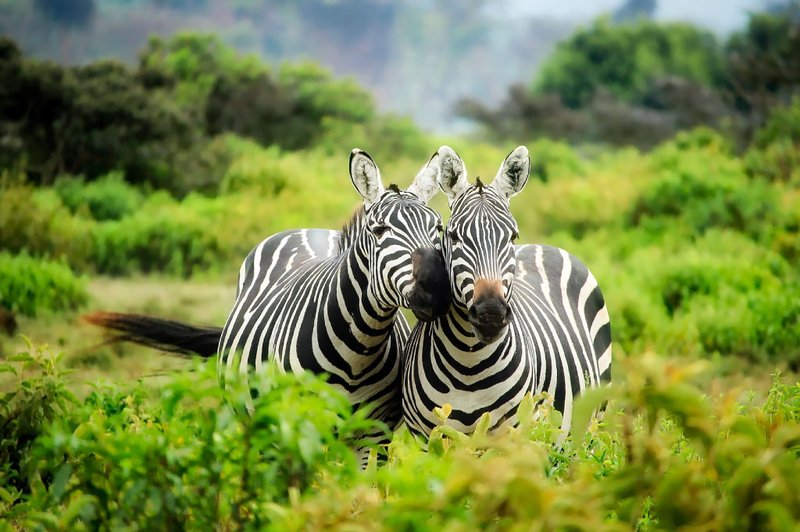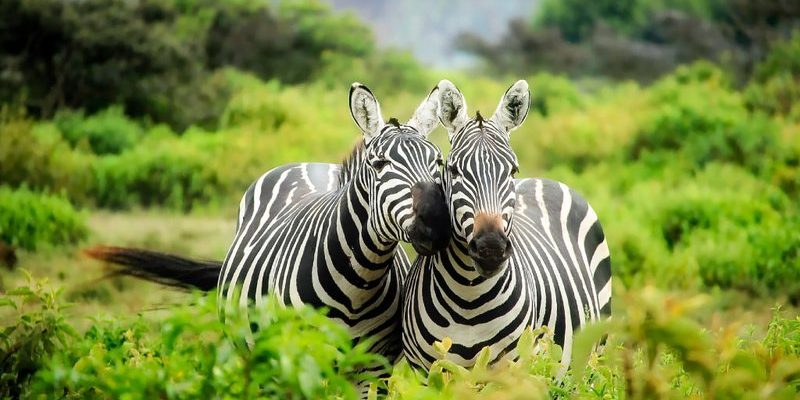
Understanding the *Plains Zebra*
The *Plains Zebra*, scientifically known as *Equus quagga*, is one of the most recognizable species of zebra, thanks to its distinctive stripes. They primarily inhabit savannas and grasslands across southeastern Africa, where they thrive in large herds. But here’s something you might not know: each zebra has a unique pattern of stripes, similar to a human fingerprint. This uniqueness helps them identify one another among the chaos of the herd.
These zebras are not just beautiful; they also have fascinating behaviors. They socialize and communicate through a variety of sounds, body language, and even facial expressions. Imagine this: a zebra shaking its head can mean it’s feeling threatened, while a relaxed stance indicates it’s at ease. Isn’t it amazing how animals have their own ways of interacting that we often overlook?
The Conservation Status of the *Plains Zebra*
Now, let’s talk about conservation. The *Plains Zebra* is currently listed as a species of “Least Concern” by the International Union for Conservation of Nature (IUCN). What does that really mean? In simple terms, it means that, for now, they aren’t considered endangered. However, populations can still fluctuate due to various threats. For instance, the *Plains Zebra* has suffered from habitat loss, mainly due to agriculture and human expansion.
When people move into zebra habitats to farm or build, it shrinks the space these animals can roam. Think about it like this: if your favorite park suddenly became a parking lot, you wouldn’t have a place to enjoy nature anymore. Similarly, zebras need open spaces to graze, breed, and thrive. In regions where they can no longer find enough quality habitat, their numbers can dwindle.
Threats Facing the *Plains Zebra*
Despite their current classification, a few significant threats loom over the *Plains Zebra*. Here’s a closer look at what those are and why they matter.
- Habitat Loss: As mentioned, agriculture and urban development are pushing zebras out of their native lands. Conservationists advocate for protected areas to ensure zebras have safe, natural habitats.
- Poaching: Sadly, poaching remains a concern. Poachers target zebras for their skins and meat, putting additional pressure on the population.
- Human-Wildlife Conflict: With more humans settling near zebra habitats, conflicts can arise. Farmers might kill zebras to protect their livestock, leading to further population declines.
These threats not only impact the *Plains Zebra* but also the overall health of the ecosystems they inhabit. Removing any species can disrupt the delicate balance of nature, leading to unforeseen consequences.
Conservation Efforts in Action
Fortunately, there are dedicated organizations and initiatives focused on the conservation of the *Plains Zebra*. These efforts aim to ensure that these magnificent animals remain a part of our planet’s rich biodiversity.
One successful example is the establishment of protected areas and national parks across Africa. These regions provide a safe haven for zebras, allowing them to roam freely without the threat of human encroachment. Additionally, community education plays a vital role. When local populations understand the importance of zebras and their ecosystems, they are more likely to protect their habitats.
Moreover, anti-poaching efforts are crucial. Many governments and NGOs collaborate to increase patrols and enforcement against illegal hunting. This collective action helps safeguard the *Plains Zebra* and other wildlife that face similar threats.
How You Can Help
You might be wondering, “What can I do to help the *Plains Zebra*?” The good news is that there are several ways you can make a difference:
1. **Support Conservation Organizations:** Many groups work tirelessly on behalf of zebras and other wildlife. Donations can help fund their programs and initiatives.
2. **Spread Awareness:** Sharing information about the challenges zebras face can encourage more people to care and get involved. Talking about it with friends or on social media can have a ripple effect.
3. **Responsible Tourism:** If you’re lucky enough to visit Africa, consider supporting eco-friendly tourism practices. Choose tours that respect wildlife and contribute to conservation efforts.
Every little bit counts. Just like a small donation can add up to a large impact, your efforts can contribute to the ongoing protection of the *Plains Zebra*.
The Importance of Biodiversity
You may not realize it, but the fight to save the *Plains Zebra* is part of a larger battle for biodiversity. Biodiversity is vital for a healthy planet because it supports everything from clean air to robust ecosystems. Zebras, as grazers, help maintain the grasslands they inhabit. Their presence encourages a variety of plants and animals to thrive, creating a rich ecosystem.
Imagine your favorite dish. It probably tastes better with a mix of spices, right? The same goes for nature. A diverse array of species helps create a balanced environment, and losing one can affect many others. Protecting the *Plains Zebra* is crucial not just for their sake, but for the overall health of our planet.
In conclusion, while the *Plains Zebra* isn’t currently classified as endangered, they face many challenges that require our attention. By understanding the threats and supporting conservation efforts, we can ensure that these beautiful creatures remain part of our world for generations to come. Just like we cherish our friends and family, it’s our responsibility to look out for the wildlife that shares our planet. Remember, every effort counts, big or small. So let’s work together to protect the *Plains Zebra* and the ecosystems they inhabit, making sure that their stripes continue to grace the African savannas for years to come.

